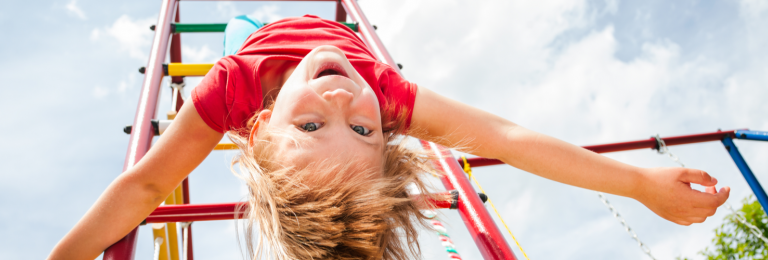What is 'risky play'?
What is ‘risky play’?
Did you climb trees when you were younger?
Were you able to run and cycle as fast as you could down a hill?
Was there a play space you had that was away from adults?
Did you ever build a fort out of wood and other materials?
If you did any of these things, you were engaging in what is now termed ‘risky play’. Risky play can generally be defined as thrilling and exciting forms of play that involve a risk of physical injury. While you may have experienced these forms of play as a child, they have become less common. Because of this, the name ‘risky play’ has been adopted so that researchers can understand what happens when this type of play is missing from a child’s experiences in early life.
Risky play is a critical component of children’s development. While the term may seem to have a negative connotation, the developmental properties of risky play are hugely positive. When children are allowed to take risks in their play, they develop skills such as decision making, communication strategies, problem solving, risk management and resilience.
Each child is unique, and so are the elements of risk that the child will engage with. For example, a two year old balancing on a log a few inches off the ground could be considered risky, while at the same time a three year old could be six feet high in a tree. Both of these examples depend on the experience, ability and confidence of the children to understand and mitigate the elements of risk in the situation and develop strategies to overcome them.
Encouraging risky play in an early years setting can seem intimidating due to a concern about injury and liability, but the evidence does not back this up. Research has shown that a child would need to spend approximately 11,000 hours playing outside to require any form of medical treatment beyond simple first aid.
Ways to engage in risky play in your setting may include providing loose parts so the children are able to construct objects, providing pieces of wood for the children to balance on, allowing the children to play with simple tools such as a small hammer, screwdriver, tape measure or clamps, or allowing the children to play in ways such as wrestling.
Risky play has many benefits to a child’s development. Speaking with your licensing officer is a great way to understand how you can engage in risky play within your setting and still meet the requirements of a licensed facility.
